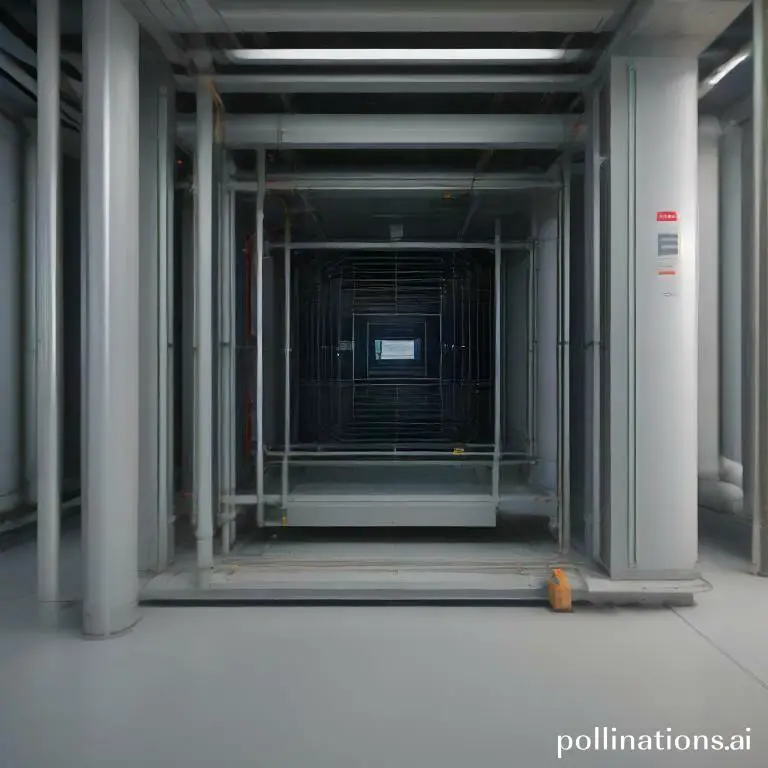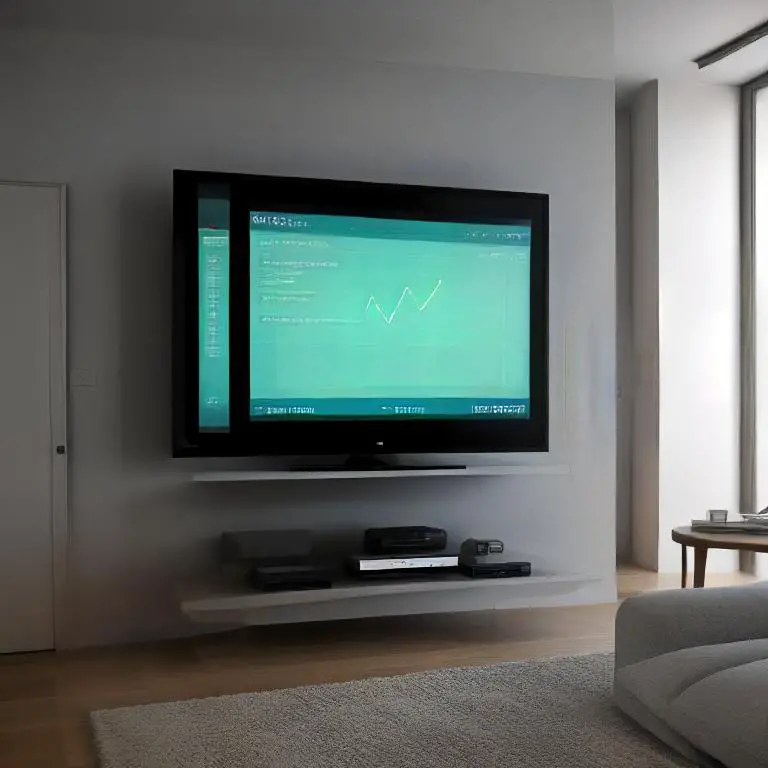
Check Out The Exclusive Deals Waiting For You! ∇
Benefits of IoT in HVAC maintenance
IoT, or the Internet of Things, has revolutionized the way we approach HVAC maintenance. By connecting HVAC systems to the internet, it allows for real-time monitoring and provides numerous benefits for both residential and commercial spaces.
1. Real-time monitoring of HVAC systems
With IoT integration, HVAC systems can be monitored in real-time, allowing for immediate detection of any issues or anomalies. This means that potential problems can be identified and addressed before they escalate, preventing costly breakdowns and minimizing downtime.
For example, if a sensor detects a sudden increase in temperature, the system can automatically adjust the cooling capacity or send an alert to the maintenance team, ensuring prompt action and preventing any disruption to the comfort of the occupants.
2. Early detection of potential issues
IoT-enabled HVAC systems provide continuous data monitoring, which enables the early detection of potential issues. By analyzing data such as temperature, pressure, and energy consumption, the system can identify patterns and anomalies that may indicate a problem.
For instance, if the system detects a gradual decrease in energy efficiency or a significant increase in energy consumption, it could indicate a malfunctioning component or a need for maintenance. This early detection allows for proactive measures to be taken, reducing the risk of system failure and costly repairs.
3. Improved energy efficiency
One of the significant benefits of IoT in HVAC maintenance is the improved energy efficiency it offers. By continuously monitoring and analyzing data, the system can optimize HVAC operations to ensure the most efficient use of energy.
For example, the system can adjust the temperature and airflow based on occupancy patterns or external weather conditions, avoiding energy waste. This not only reduces utility bills but also contributes to environmental sustainability by minimizing energy consumption.
4. Cost savings
IoT integration in HVAC maintenance leads to significant cost savings. By detecting issues early on, the need for expensive repairs or replacements can be minimized. Additionally, the optimized energy efficiency results in reduced energy bills.
For instance, by identifying and fixing a minor refrigerant leak promptly, the system can avoid major compressor damage, saving thousands of dollars in repair or replacement costs. Similarly, the energy savings achieved through efficient HVAC operations translate into long-term cost savings for building owners.
| Benefit | Description |
| Real-time monitoring of HVAC systems | Immediate detection of issues and proactive maintenance |
| Early detection of potential issues | Identifying problems before they escalate |
| Improved energy efficiency | Optimizing HVAC operations for energy savings |
| Cost savings | Minimizing repair and replacement expenses |
IoT sensors for predictive HVAC maintenance
IoT sensors play a crucial role in predictive HVAC maintenance, ensuring optimal performance and energy efficiency. These sensors provide real-time data on various environmental factors, allowing for proactive measures to be taken before any major issues arise.
1. Temperature and humidity sensors
Temperature and humidity sensors are essential for maintaining a comfortable indoor environment. They continuously monitor and adjust the HVAC system to ensure the temperature and humidity levels are within the desired range. By detecting any fluctuations, these sensors help prevent potential equipment malfunctions and ensure energy efficiency.
2. Pressure sensors
Pressure sensors are vital in HVAC systems as they monitor and control the pressure levels in various components. They detect any abnormalities in the system, such as leaks or blockages, and alert maintenance teams to take immediate action. By identifying these issues early on, pressure sensors help prevent costly repairs and system downtime.
3. Air quality sensors
Air quality sensors measure and monitor the quality of indoor air, including factors such as pollutants, allergens, and CO2 levels. These sensors help HVAC systems maintain a healthy and comfortable environment by adjusting ventilation rates and filtration systems accordingly. By ensuring good air quality, these sensors contribute to occupant health and well-being.
4. Usage and occupancy sensors
Usage and occupancy sensors provide valuable insights into how spaces are being utilized. By detecting occupancy levels and usage patterns, these sensors help optimize HVAC system operation. They enable the system to adjust temperature and ventilation based on real-time occupancy data, leading to energy savings and improved comfort.
| Sensor Type | Function |
|---|---|
| Temperature and humidity sensors | Monitor and adjust temperature and humidity levels |
| Pressure sensors | Monitor and control pressure levels in components |
| Air quality sensors | Measure and monitor indoor air quality |
| Usage and occupancy sensors | Detect occupancy levels and usage patterns |
Data Analytics in Predictive HVAC Maintenance
1. Collecting and Analyzing Sensor Data
In the field of predictive HVAC maintenance, collecting and analyzing sensor data is a crucial step in ensuring optimal system performance. By continuously monitoring various parameters such as temperature, humidity, and pressure, valuable insights can be gained to detect potential faults and inefficiencies.
1.1 Temperature Sensors
Temperature sensors play a key role in gathering data that can be used to identify deviations from desired set points. By analyzing temperature trends, HVAC technicians can proactively identify issues such as faulty thermostats or inadequate cooling or heating.
1.2 Humidity Sensors
Humidity sensors provide valuable information about the moisture levels in the air. Excessive humidity can lead to mold growth and discomfort, in the course of low humidity can cause dryness and static electricity. By monitoring humidity levels, HVAC systems can be adjusted accordingly to maintain optimal indoor air quality.
1.3 Pressure Sensors
Pressure sensors help in monitoring the pressure within HVAC systems, such as air ducts and refrigerant lines. Deviations from normal pressure levels can indicate issues like leaks or blockages, which can affect the overall performance and efficiency of the system.
2. Predictive Algorithms for Fault Detection
Utilizing predictive algorithms is a powerful tool in HVAC maintenance, as it enables the early detection of potential faults before they escalate into major issues. These algorithms analyze the collected sensor data and identify patterns or anomalies that may indicate the presence of a fault.
2.1 Anomaly Detection
Anomaly detection algorithms are designed to identify deviations from normal system behavior. By comparing real-time sensor data with historical data, these algorithms can detect unusual patterns that may indicate a fault or malfunction. This early detection allows technicians to take proactive measures to prevent system failures.
2.2 Fault Classification
Once an anomaly is detected, fault classification algorithms come into play. These algorithms categorize the detected anomalies into specific fault types, such as compressor failure, refrigerant leak, or airflow obstruction. This classification helps technicians in evaluating the root cause of the issue and implementing appropriate corrective actions.
3. Trend Analysis for System Optimization
Trend analysis is an essential aspect of predictive HVAC maintenance as it helps in identifying long-term patterns and optimizing system performance. By analyzing historical sensor data, trends can be identified, revealing insights into energy consumption, load patterns, and system efficiency.
3.1 Energy Consumption Analysis
3.2 Load Patterns Analysis
Load patterns analysis involves studying the variations in system demand over time. By absorbing load patterns, HVAC systems can be optimized to meet the specific needs of different areas or zones within a building. This optimization ensures that the system operates at its maximum efficiency at the same time providing adequate comfort.
3.3 System Efficiency Analysis
System efficiency analysis focuses on identifying areas of improvement in terms of performance and energy consumption. By analyzing trends in system efficiency, HVAC technicians can identify opportunities for upgrades or modifications that can empower overall system performance and reduce energy waste.

Remote Monitoring and Control
With the advancements in technology, remote monitoring and control of HVAC systems have become more accessible and convenient than ever before. This section will navigate into the various aspects of remote monitoring and control, providing a comprehensive grasping of its benefits and functionalities.
1. Monitoring HVAC Systems from Anywhere
One of the key advantages of remote monitoring and control is the ability to monitor HVAC systems from anywhere. Whether you are at home, in the office, or on the go, you can easily keep track of the performance and status of your HVAC system. This allows for proactive maintenance and troubleshooting, ensuring optimal efficiency and reducing downtime.
2. Controlling Temperature and Settings Remotely
Another important feature of remote monitoring and control is the ability to adjust temperature and settings remotely. With just a few taps on your smartphone or computer, you can easily set the desired temperature, change fan speeds, or switch between heating and cooling modes. This level of control ensures that your HVAC system is always tailored to your comfort and energy-saving preferences.
3. Alarming and Notifications for Maintenance
Remote monitoring and control also come with the added benefit of alarming and notifications for maintenance. In case of any issues or malfunctions, you will receive real-time alerts, allowing you to take immediate action. This proactive approach to maintenance helps in preventing major breakdowns, extends the lifespan of your HVAC system, and saves you from costly repairs.
| Benefits of Remote Monitoring and Control: |
|---|
| – Easy monitoring from anywhere |
| – Convenient remote control of temperature and settings |
| – Real-time alarming and notifications for maintenance |

Integration with existing building management systems
In today’s technologically advanced world, the integration of IoT devices into existing building management systems has become essential. This seamless integration allows for a more efficient and streamlined approach to managing and controlling various aspects of a building’s operations.
Seamless integration of IoT devices
With the integration of IoT devices, such as sensors and smart thermostats, building owners and managers can have real-time access to valuable data. These devices can monitor and control temperature, lighting, and energy usage, ensuring optimal efficiency and comfort.
Centralized control and monitoring
One of the key advantages of integrating IoT devices into building management systems is the ability to centralize control and monitoring. Through a centralized platform, building managers can have a comprehensive view of all connected devices and systems, allowing for better decision-making and troubleshooting.
Streamlined maintenance workflows
Conclusion
IoT technology has revolutionized the way HVAC systems are maintained. With the help of sensors and data analytics, predictive maintenance has become more accurate and efficient. This has resulted in reduced downtime, increased energy efficiency, and cost savings for building owners and managers.
Implementing IoT in HVAC systems requires careful planning and investment, but the long-term benefits are worth it. By leveraging the power of IoT, building owners can ensure that their HVAC systems are running smoothly and efficiently, providing a comfortable environment for occupants during minimizing maintenance costs and downtime.
Read Also:
1. Addressing privacy concerns in IoT-based HVAC.
2. IoT-enabled HVAC and indoor air quality.



